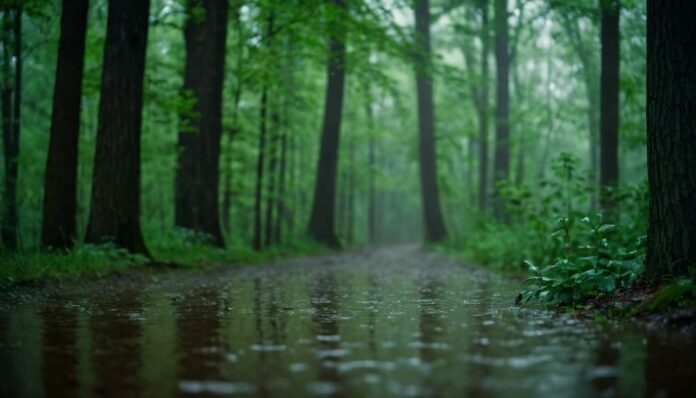Rain is a natural phenomenon where water droplets fall from the sky to the ground. It occurs when moisture in the air condenses and forms clouds, which eventually release precipitation in the form of raindrops. Rain is essential for sustaining life on Earth, providing water for plants, animals, and humans.
Interesting Facts About Rain
- Raindrops can vary in size, ranging from tiny droplets less than 0.5 millimeters in diameter to larger drops over 6 millimeters across.
- The smell of rain, known as petrichor, is caused by a combination of oils released by plants and bacteria called actinomycetes.
- Rainbows often appear after rain showers when sunlight is refracted and reflected by water droplets in the air.
- The wettest place on Earth is Mawsynram, India, where it rains nearly every day of the year.
- Rainfall is measured using instruments called rain gauges, which collect and measure the amount of precipitation.
- Heavy rain can lead to flash floods, landslides, and other natural disasters, particularly in areas with poor drainage or steep terrain.
- Rainforests, such as the Amazon Rainforest, receive a significant amount of rainfall each year, contributing to their lush vegetation and biodiversity.
- Rainfall patterns are influenced by global climate systems, such as El Niño and La Niña, which can lead to periods of drought or excessive rainfall.
- Rain is formed when water vapor in the atmosphere condenses into droplets and falls to the ground under the force of gravity.
- The sound of rain hitting surfaces, known as “rain noise,” can have a calming effect and is often used in relaxation techniques and sleep aids.
- Rain can contain various pollutants, including chemicals from air pollution and bacteria from contaminated surfaces.
- Rainfall can be classified into different types, such as drizzle, showers, and thunderstorms, based on intensity and duration.
- In some cultures, rain is associated with fertility, renewal, and cleansing rituals.
- Rainfall can have a cooling effect on the environment, lowering temperatures and providing relief from heatwaves.
- The study of rain and other forms of precipitation is known as meteorology.
- Rainy seasons are common in tropical and subtropical regions, characterized by frequent and heavy rainfall.
- Rain can help remove airborne particles and pollutants from the atmosphere, improving air quality.
- Rainfall is an important factor in agriculture, providing water for crops and livestock.
- The largest raindrops ever recorded were about 8.8 millimeters in diameter, measured during a thunderstorm in Brazil.
- Rain shadows are areas that receive significantly less rainfall than surrounding regions due to the blocking effects of mountains or other geographic features.
- Rainwater harvesting is a sustainable practice that involves collecting and storing rainwater for later use, such as irrigation or household consumption.
- The smell of rain can vary depending on factors such as soil composition, vegetation, and temperature.
- Rainfall patterns are changing due to climate change, leading to more frequent and intense rain events in some regions.
- Raindrops are not actually tear-shaped but are more spherical in shape due to air resistance.
- Rainfall is a key component of the water cycle, where water evaporates from the surface, forms clouds, and eventually returns to the Earth as precipitation.
- Rain can be acidic, particularly in areas with high levels of air pollution, leading to environmental damage to soil, waterways, and vegetation.
- Rain barrels are containers used to collect rainwater from rooftops for various purposes, such as watering gardens or flushing toilets.
- Rainfall is measured in units such as inches or millimeters, indicating the depth of water that falls over a specific area.
- The sound of rain can have a psychological effect on mood and emotions, with some people finding it soothing and relaxing.
- Rainfall variability can impact ecosystems and biodiversity, affecting plant growth, animal behavior, and habitat availability.
